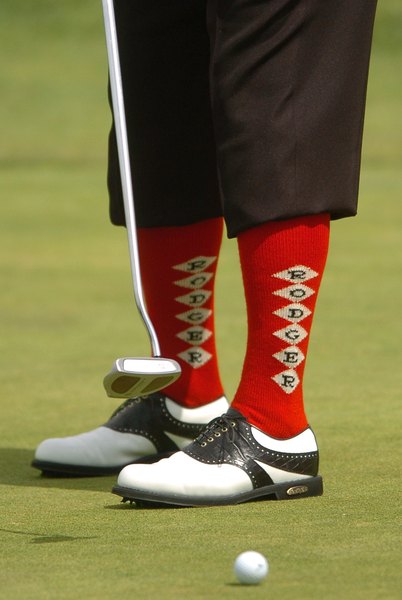Types of Putter Heads

Putter heads are available in a range of shapes and sizes, and finding the right putter head for your stroke is essential to consistency on the green.
A putter head may be large or small, heavy or light, long or compact and shaped in a variety of ways. Odyssey Golf, Scotty Cameron (Titleist) and Ping are among the most cutting-edge putter-head makers.
Overview
Putter heads are available in a range of shapes and sizes, and finding the right putter head for your stroke is essential to consistency on the green.
A putter head may be large or small, heavy or light, long or compact and shaped in a variety of ways. Odyssey Golf, Scotty Cameron (Titleist) and Ping are among the most cutting-edge putter-head makers.
Blade
Blade-shaped putter heads are the most traditional and recommended for straight putters, according to Golf Putter Guide. Putters with blade heads are among the lightest and smallest, compact and fairly narrow, and the weight is in the face. Nearly every major putter maker, from Scotty Cameron to Odyssey to Ping, has a blade option. The Odyssey White Hot XG blade was the putter PGA Tour star Phil Mickelson used to win the 2010 Masters, according to Golf.com. The cavity-back putter, which has a hollow spot along the center of the back of the blade, is an offshoot of the blade but longer and with a larger sweet spot.
Mallet
The mallet carries most of its weight on the face and includes the heaviest putter heads on the market. A mallet head usually resembles a half-circle and slides across the green, reducing the risk of digging in.
An offshoot of the mallet head is the two-ball putter, which has two circles in a straight line on the top of the head. Most major golf club makers, including Ping, Odyssey and TaylorMade, offer mallets.
Picking the Right Style
When selecting a putter, golfers should take into consideration their overall accuracy. Blades are meant for players with pure, straight strokes and are generally used by touring pros or very low-handicap players. Because blades are smaller, they're harder to control.
Mallets and cavity-back putters are easier to hit and a better choice for most golfers. The mallet shape allows it to sweep over the green, minimizing mis-hits. In addition, mallets are larger and have bigger sweet spots. Other options to consider for a putter include weight, grip and length (standard, belly or long).
Writer Bio
J.D. Chi is a professional journalist who has covered sports for more than 20 years at newspapers all over the United States. She has covered major golf tournaments and the NFL as well as travel and health topics. Chi received her Bachelor of Arts in professional writing from Carnegie Mellon University and is working toward a master's degree in journalism.
